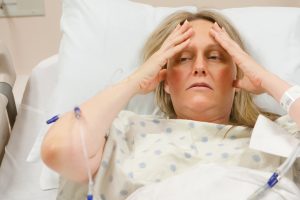
The Good News About Stroke Prevention and Treatment
The good news about stroke these days is in the areas of prevention and treatment. You can read about what to do to prevent stroke at the bottom of this page (hypertension, smoking, cholesterol, diabetes) and we have two entire free pages on treating both types of stroke, bleeding-type and blockage-type stroke. In short, there are several things you can do to minimize your risk of having a stroke. And, if you have one and someone calls 911 right away, you have a great chance of not only surviving the stroke but also having minimal damage from the stroke. (Call 911 in the US. See a list of emergency medical phone numbers for other English-speaking countries at the bottom of the page.) And stroke rehabilitation care has evolved to be better than ever to restore function and get people back to their usual lives.
Welcome to the Neuroscience Research and Development Consultancy website. Have a question or a comment? Send it to us at: Comment@NeuroSciRandD.com
Articles related to Stroke:
What’s A Stroke?
A stroke is death or near-death of brain tissue. That’s why strokes are so serious. We live in our brains, so if our brain dies, we die. Stroke is caused by a blockage of blood vessels bringing oxygen-carrying-blood to our brain. The blockade of blood flow can be from an actual blockage in the blood vessel, or from bleeding such that the body’s blood pressure falls too low to push the blood up to the brain. Without oxygen, brain cells die. Most strokes are from blockage, not bleeding. And most blockages occur when there is “hardening of the arteries” or atherosclerosis. That’s why preventing atherosclerosis is a huge step toward lowering risk of a stroke. Bleeding strokes are from bleeding inside the brain, almost always from too high blood pressure. That’s why lowering high blood pressure is another huge step in preventing stroke.
How to Tell if a Person Is Having a Stroke
Since the important part of limiting permanent damage and disability for a person who is or might be having a stroke is knowing right away whether or not they really are having a stroke, an important question is, how to you know? At the top of the list when starting to talk about stroke is how to know one when you see one. And when you know you are seeing a real stroke, call 911.
Stroke Signs You Can See
There are signs that a person is having a stroke that you can see. For example:
- Or, they suddenly have trouble talking, or seem not to understand what people are saying, or they are suddenly confused and can’t recover.
- The limb, an arm or a leg, might just going limp, not working.
- If the individual falls, passes out, and has an arm or a leg or other body part jerking or twitching. On the one hand, this one is dramatic and easy to spot. On the other hand, this could be a seizure and not a stroke.
- If they have a sudden loss of balance or trouble walking, or appear dizzy.
Stroke Signs You Can’t See
Then there are stoke signs you can’t see until the person complains about them. For example:
- If he/she suddenly has trouble seeing out of one or both eyes.
- Is stricken with a sudden severe headache.
- Or, complains of numbness or weakness somewhere, such as in the face, or with an arm or a leg, or maybe on one whole side of the body.
With these three examples, unless the person says something, you can’t see what’s happening. Except maybe the part about weakness in an arm, a leg, or one side of the body. This problem would likely be obvious because of a change in their behavior, as in, they might fall down.
A Clever, Easy to Remember, and Often Quoted Acronym: FAST
Doctors in England made up the FAST reminder acronym in 1998. It’s an easy way to remember the symptoms of a stoke as the stroke is happening. The first three letters of FAST are each a reminder of a stroke sign.
- The “F” stands for face drooping on one side. If one side of a person’s face suddenly looks limp and is not right, or if the person complains that half their face feels numb, it’s a problem. Ask them to force a smile. If only half their mouth smiles, call 911.
- The “A” is for arm It also reminds you to ask about arm numbness, which you might not know unless the person tells you. Ask him/her to raise both arms in the air. Can they do it? Does one arm only go up a bit, or go up and then drift down and they can’t keep it up? Call 911.
- The “S” stands for speech. Has their talking suddenly changed, for example, gotten hard to understand or slurred? Or maybe they’re not able to talk at all. Ask them to say some short sentence and see if they can do it. Can they speak clearly? If not, call 911.
- The “T” gets us back to the hard fact that the clock is ticking. T is for time. Don’t wait and wonder what to do to help the person. Time is brain. If you think someone is having a stroke, call 911.
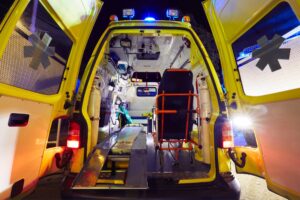
Call 911 Right Away, As In, Right Now, If Someone is Having a Stroke
The most important “take-away” of this page is to call 911. Get that ambulance rolling. Remember the “about stroke” TV ads showing a snake wrapping around a woman’s leg or a woman’s hair on fire. These ads were useful to show stroke as a “right now”, immediate-action-needed emergency. If stroke treatment is going to work it has to be started quickly, as soon as is possible after the stroke starts. This 911 call needs to be as immediate as possible, with no hesitation, no lost time. Then the person is whisked away by ambulance to the nearest Specialized Stroke Center Emergency Department. Stroke Centers have the motto, “Time is brain.” Those first minutes are super important to keep all parts of the brain alive. As we mentioned above, if too much brain dies, the person dies.
One of our readers asked:
Why do you keep saying call 911? Doesn’t everyone just call 911?
Well, no, oddly enough. One-third to two-third of stroke victims don’t call 911. They drive themselves to the Emergency Department. About one-third of the time people fear the ambulance will not take them to the hospital of their choice, so they drive themselves or have someone take them. One out of five didn’t know it was an emergency! About 10% of people say a family member preferred to drive them, or someone thought it would be faster to drive, or they were close to a hospital anyway or already in their car. Three out of 100 feared the ambulance would be too expensive. (Here’s a link to a little study about this question.) We who treat stroke victims try to do a lot of community education on stroke and calling the emergency medical number.
Why the Signs of a Stroke Look the Way They Do
Each area of your brain connects to a specific part of your body. For example, one small area in your brain makes your right leg move. Another little part is the feeling in your left hand. Every part of your body is “electrically” connected by nerves into some area of your brain. So, what a stroke looks like or feels like depends on which areas of the brain are at risk of dying. That’s why the person might feel a sudden weakness in one arm or leg. Or they can’t talk or they get confused. It means the connected part of the brain is at risk of dying.
Strokes Are Common
Strokes are common. In fact, and sadly, they are too common. There’s nothing unusual or rare about a stroke. In every country around the world stroke is a major cause of disability. And a major cause of death. Of the millions of people worldwide who have a stroke, a one out of three die and another one out of three are left permanently disabled.
Are Strokes Just Bad Luck?
This is a common belief. But it’s not true. Most people believe that strokes come as a surprise, that they occur “out of the blue”, strike with no warning. You’re fine one day, and boom, the next day you’ve had a stroke and you’re in the hospital. People tend to think it’s just bad luck. And the same with getting better. Maybe you’ll be lucky and get completely well, perhaps with some physical therapy help. Or, sadly, luck of the draw, you could be permanently disabled. Or worse yet, dead.
The Truth Is, Strokes Are Rarely a Surprise
In 2022 it’s rarely really true that strokes come out of the blue. A stroke only surprises you if you’ve not been watching. Well, maybe at times a stroke is a surprise. For example, if it’s from a little blood vessel bulge that burst. But it’s seldom a real surprise. Long-term smoldering health problems are usually behind the “sudden” stroke, with 85% of strokes due to high blood pressure that has gone on for many, many years. Get your blood pressure checked and, if it’s high, get it treated. Get the pressure down, and you’ll dodge 85% of the risk of a stroke. Same story with cholesterol and other blood fats, and with smoking, and with diabetes. More on how to prevent strokes below.
A Personal Life’s Story About Us
We at the Neuroscience Research and Development Consultancy care a lot, maybe even worry a lot, about stroke. Let us tell you why. Stroke is very personal for one of our company officers. Both of his grandfathers died of a stroke at age 73. His uncle was severely and permanently disabled by a stroke at age 47, and when he died years later he had been deaf and blind for a decade. His aunt and cousin also died of strokes at young ages. These occurred in an era before medicine knew about the link between high blood pressure and stroke. And, it was before doctors could easily catch high blood pressure early and treat it. Our company officer’s father started a successful battle with high blood pressure at age 40. He lived to be 96, a healthy, clear-minded, and happy 96. Treating high blood pressure really does make a huge difference.
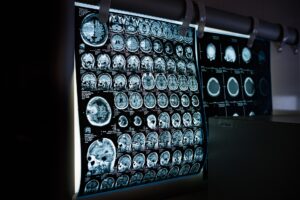
The Two Main Kinds of Strokes
There are two main kinds of strokes. At least for now let’s stay with two main kinds. One kind is when a blood vessel to or in the brain gets blocked by a clot. With the vessel blocked the blood can’t flow. The other main kind of stroke is a bleed. A blood vessel breaks open and bleeds inside the brain. Blood flows out of the vessel and into the brain tissue. You see, our brain only stays alive because blood constantly brings oxygen. Whether a clot or a bleed, some part of the brain does not get the oxygen it needs to stay alive. All brain areas need oxygen every minute to stay alive. Just few minutes without oxygen kills brain cells. That’s why Stroke Treatment Centers have the motto, “Time is brain.”
Well, Actually, There Are a Couple More Types of Strokes
The strokes caused by a clot blocking the blood vessel can be one of two types. One type is a block where the blood clotted right in the vessel in the brain. The other type of block happens when the blood clot occurs in a blood vessel in a more distant part of the body, far from the brain, but a piece of this distant clot breaks off and travels through the blood vessel until it wedges in a small blood vessel in the brain and blocks the blood vessel.
In addition, there are two types of bleeding strokes, but for now we’ll stop adding types of strokes.
What Causes Strokes and How to Prevent Them
Preventing strokes is far, far better than letting them happen and treating them. A half-ounce of prevention in this case is worth many pounds of cure. This is true because strokes are too often hard to treat. And, sadly, some just can’t be treated. Once some strokes occur the brain damage is done. The disability (or death) is there. Strokes that can be treated have to be treated immediately. And, bad news again, luck does come into play when treating strokes. Who wants Lady Luck involved at a time like this? How many minutes away is the nearest Specialized Stroke Center Emergency Department? How fast can the Emergency Medical Services ambulance get to the stroke victim? Then, how quickly can EMS get the stroke victim to the best emergency department? How soon after the start of the stroke did someone call 911? It gets complicated.
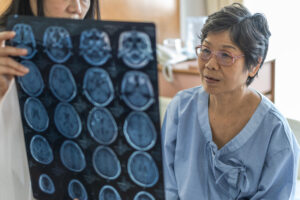
While getting a stroke treated in time needs some luck, preventing a stroke is much more of a sure thing.
Beating the Main Stroke Devil – High Blood Pressure
High blood pressure causes 85% of strokes. So, it’s easy. See your doctor and have your blood pressure checked. If you don’t have a doctor, find one! If you use the blood pressure machines in your grocery or drug store, okay, but don’t rely on them. Store machines are rarely checked for being right. Your doctor will get the right number. If she says your blood pressure is high, get a prescription from her for the medicine to treat it. And, get the prescription filled and take the medicine. It’s amazing how many people buy the medicine for high blood pressure but don’t take it. Don’t think you don’t need the medicine because you feel fine. You don’t feel high blood pressure. It’s called a silent killer. There are no symptoms. You feel fine until you have a stroke. No warning. And about one-third die. Sudden death.
Come On, People, Quit Smoking Already!
Don’t smoke. It really is that simple. Smoking cigarettes, cigars, or a pipe damages blood vessels. Your inside plumbing goes from nice, solid, like-new pipes to rusty, corroded pipes ready to burst at any time. We don’t yet know about vaping (electronic “cigarettes”). However, it does much less damage than any kind of burning-tobacco smoking. Inhaled nicotine is probably not the problem with vaping. If you have other junk in your vape juice/e-liquid, especially oils, it can kill you. Smoking, in addition to aging your plumbing, also gives a person high blood pressure. Double whammy.
Nicotine Helps Stop Depression – Take a Depression Medicine Instead
But here’s the problem. The nicotine from smoking feels good. It treats a down mood. And, nicotine is addictive. If you get depressed, angry, and irritable if you don’t smoke, ask your doctor for a medicine for depression. If you’re really not depressed but you can’t stop smoking, you’re addicted to the nicotine. So, find a safer source for your nicotine hit. Smoking is the most dangerous way to get nicotine. Stop smoking and use nicotine patches. Or, stop smoking and chew nicotine gum. Maybe even stop smoking and start vaping (just no junk or oil vape juice). Do whatever, but stop smoking. It might not feel like the best answer to you right now, but you’ve got to stop smoking.
Shortened Lives – A Case Example
When our CEO was the head of a Division in the Dept. of Medicine at Scripps Clinic (La Jolla, CA, USA), an older guy from Montana came to see him. He said that it was so obvious that smoking was shortening the lifespan of his brothers and sisters. His mom and dad, and his aunts and uncles, all lived into their mid-90s, ranchers in Montana. None of them smoked. But, his brothers and sisters (and cousins) were all cigarette smokers. And they were all, one by one, dying in their early 70s. From the old guy’s point of view, this information told the story. And, the message was clear. Smoke and you die 25 years too soon. He had stopped smoking.
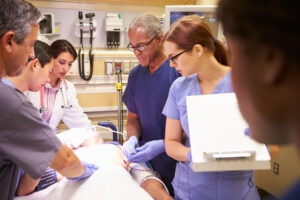
Those Fats in Your Blood
LDL cholesterol and triglycerides, the fatty lumps floating in your blood. While your doctor is checking your blood pressure, have her draw some blood to measure your cholesterol. High cholesterol is another way to ruin your body’s plumbing. It weakens the walls of your blood vessels and sets the stage for a stroke. If your cholesterol is high, there are now great medicines to treat it, to lower the level. Get a prescription, get the medicine, take it, and live ten extra years. That’s ten extra good years, healthy, clear minded.
The Sugar in Your Blood
Too much sugar in your blood, that is, high blood sugar, called Type II diabetes. Maybe “lifestyle changes” will help. Healthy foods, exercise. Maybe not. If not, get back to your doctor again and get the right medicine to treat it. There are great, easy-to-take medicines for diabetes. Your doctor can also check for early diabetes, or “pre-diabetes”. She has tests and will get your medical history, and can tell you whether you might become diabetic. Diabetes is much easier to prevent than to treat. You might be able to “dodge the diabetes bullet” altogether.
Are You Healthy?
If you’re healthy now, great. If not, do whatever you need to do to become healthier to help prevent strokes. Eat healthy foods. Things like vegetables, fruits, and nuts, whole grain breads and cereals, chicken and especially fish, and healthy oils like olive oil and canola oil.
And exercise. Get yourself moving. Any exercise! Physically getting in gear and getting going is much, much better than sitting. Walk. When going up two or down three floors in a building, take stairs rather than just hopping on an elevator and pushing a button. Swim. Bicycle. If you can and want to do more, go for it. But while you’re sitting there and thinking about it, about what exercise to do, about how to get started, take a walk. The best exercise for you is the exercise that you’ll keep doing for years.
Medical Emergency Telephone Numbers
Australia – 000
Ireland – 112 or 999
New Zealand – 111
United Kingdom – 999 or 112
United States – 911
Helpful links:
The National Institute on Aging on stroke
National Institute of Neurological Disease and Stroke – Stroke Information Page
Or, try the National Institutes of Health, National Heart, Lung, and Blood Institute on stroke
National Library of Medicine’s Medline Plus on stroke
Center for Disease Control and Prevention (CDC) on stroke
The National Stroke Association – About Stroke
The Mayo Clinic on stroke
